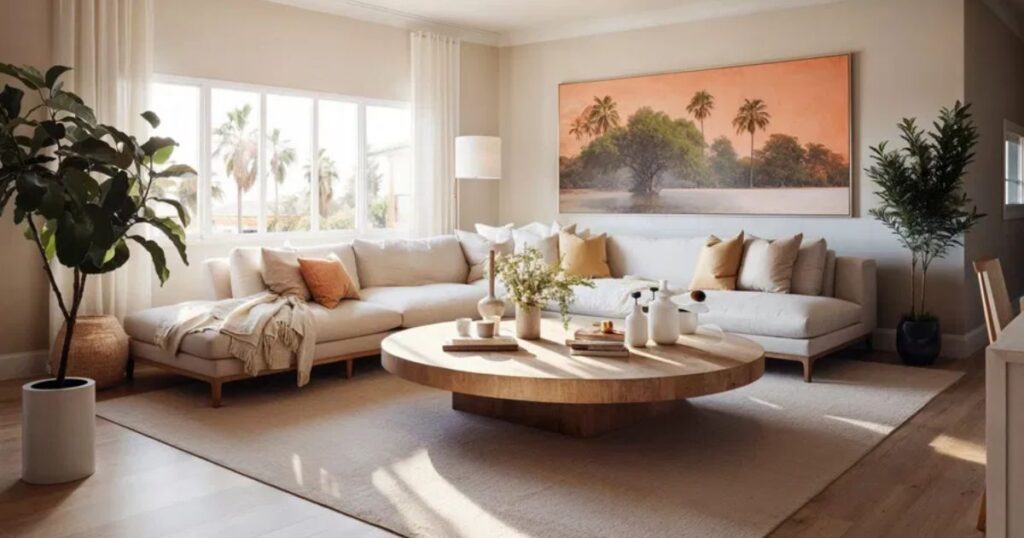Art is one of the most powerful elements that can transform a house into a home. It adds personality, evokes emotions, and ties the entire interior design together. However, displaying art effectively requires more than just hanging a painting on the wall. Proper placement, lighting, scale, and harmony with the surrounding decor are key to making your art stand out while enhancing your space. In this article, we’ll explore tips on how to display art effectively and incorporate it seamlessly into your interior design.
1. Choosing the Right Art for Your Space
The first step in displaying art effectively is selecting pieces that resonate with your personal taste and match the overall vibe of the room. Consider the following factors when choosing art:
- Theme: Decide on the style of art that best suits the room’s theme. For instance, abstract art might work well in a modern or minimalist setting, while classical landscapes or portraits might be more fitting for traditional or rustic interiors.
- Color Palette: Choose artwork that complements or contrasts with your room’s color scheme. This creates a visual balance and helps the art either blend in or stand out, depending on the desired effect.
- Size and Scale: Make sure the size of the artwork is appropriate for the wall space available. A small piece on a large wall can look lost, while a large piece in a cramped space can overwhelm the room.
When selecting art, don’t feel pressured to stick to traditional paintings. Sculptures, photography, prints, and even textiles can add an artistic touch to your interiors.
2. Consider the Layout and Composition
Once you’ve chosen the artwork, it’s time to consider the layout and composition. The way you arrange your art on the wall can drastically change the dynamic of the room. Here are a few layout ideas:
- Single Statement Piece: A single, large artwork placed above a focal point, such as a fireplace or sofa, can create a bold, dramatic effect. This approach works best when you want the art to be the central point of attention in the room.
- Gallery Wall: A collection of smaller artworks arranged in a grid or organic layout can create a stunning focal point on a large wall. Gallery walls work best when you have a variety of pieces that complement each other, either through color, theme, or frame style.
- Symmetry vs. Asymmetry: Symmetrical layouts (such as two pieces of art hung at equal heights on either side of a mirror or a piece of furniture) give a room a sense of order and formality. Asymmetrical layouts, on the other hand, feel more casual and dynamic, perfect for eclectic or creative spaces.
Experiment with different compositions by laying out your art on the floor before committing to hanging them on the wall.
3. Focus on Proper Placement and Height
One of the most common mistakes in displaying art is placing it too high on the wall. A good rule of thumb is to hang art at eye level, which typically means the center of the artwork should be around 57 to 60 inches from the floor. If you’re hanging art above furniture, such as a sofa or console table, ensure that the bottom edge of the artwork is roughly 6 to 12 inches above the furniture to maintain visual balance.
In rooms where people are often seated, such as living rooms or dining rooms, it’s also important to consider the seated eye level. Artwork in these areas should be positioned slightly lower so that it can be easily viewed from a seated position.
4. Consider Lighting to Highlight Your Art
Lighting plays a crucial role in how art is perceived within a space. Poor lighting can cause artwork to fade into the background, while proper lighting can make it the star of the room. There are several ways to enhance your art through lighting:
- Natural Light: If possible, position art near windows to take advantage of natural light. However, be cautious with direct sunlight, as it can cause colors to fade over time. Consider UV-protective glass or acrylic to safeguard your artwork.
- Accent Lighting: Use picture lights, wall sconces, or track lighting to highlight individual pieces of art. These lights can be angled to focus on specific artworks, creating a gallery-like effect in your home.
- Ambient Lighting: General room lighting, such as ceiling fixtures or lamps, should complement your accent lighting. This prevents the room from feeling too dark or overly focused on one piece of art.
Dimmers are a great addition to your lighting setup, allowing you to adjust the light levels depending on the time of day or mood you want to create.
5. Mix and Match Frames for Visual Interest
Frames are not just a protective casing for your artwork; they also serve as part of the overall design. The right frame can enhance the beauty of a piece, while the wrong one can detract from it. Here are some framing tips to keep in mind:
- Consistent Frame Style: For a cohesive look, use frames that are similar in color, material, or design, especially if you’re creating a gallery wall. Black, white, or wooden frames are classic choices that complement most types of art and decor styles.
- Eclectic Mix of Frames: For a more casual or bohemian feel, mix and match different types of frames. Combine metallic, wooden, and even colorful frames for a quirky and creative look. Just be sure that the variation in frames doesn’t overshadow the artwork itself.
- Frameless Options: For a modern, sleek appearance, consider frameless display methods such as canvas-wrapped prints or clip frames. These minimalist options let the art take center stage.
6. Creating Balance with Furniture and Decor
Art doesn’t exist in isolation—it interacts with the furniture, textiles, and decor in the room. Achieving balance between these elements ensures that the space feels harmonious rather than cluttered. Here’s how to create that balance:
- Proportions Matter: When hanging art above a piece of furniture, such as a sofa or credenza, ensure that the artwork is no wider than two-thirds the width of the furniture. This creates a balanced visual relationship between the furniture and the art.
- Coordinate Colors: While art doesn’t need to match your furniture perfectly, it should complement the overall color palette of the room. Pull colors from the artwork into other accessories, such as throw pillows, rugs, or curtains, to tie the room together.
- Consider Texture: If your room features smooth surfaces like glass, metal, or leather, adding textured artwork (such as a canvas with thick paint strokes or a textile piece) can bring warmth and visual interest to the space.
7. Rotating Your Art for Freshness
One of the great things about art is its versatility. You don’t need to keep the same pieces on display year-round. Rotating your art every few months can refresh the look of your home and allow you to showcase different pieces. For instance, you could display brighter, more vibrant pieces during the summer and switch to moodier tones in the winter.
This also gives you the opportunity to feature new art or experiment with different layouts, ensuring that your space always feels dynamic and inspiring.
Conclusion
Interior Decorators in Chennai have long recognized that art has the power to elevate your interiors, making them more personal, engaging, and visually stimulating. By carefully considering the selection, placement, lighting, and framing of your artwork, you can create a space that not only reflects your style but also brings beauty and harmony to your home. Whether you prefer a minimalist approach or an eclectic gallery wall, the key is to let your art enhance your space without overwhelming it. With these tips, you’re well on your way to displaying art effectively and creating the perfect interior design.



